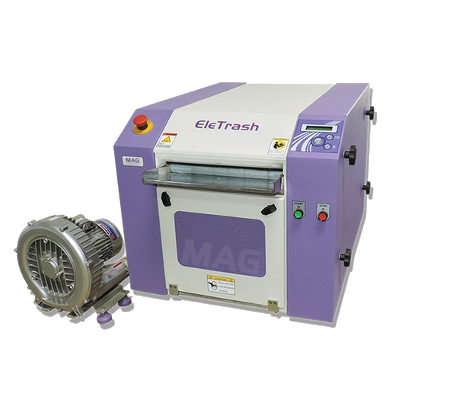All You Required to Understand About Robotic Vision and Its Applications in Advanced Optical Dimension Systems
Robotic vision stands for a considerable advancement in the crossway of computer system vision, fabricated knowledge, and device understanding. This technology enhances the precision of optical dimension systems, enabling real-time information analysis and improved quality assurance. Its impact extends multiple sectors, from producing to health care. The developing landscape of robotic vision increases questions about future capabilities and applications. What developments lie ahead in this transformative field?
Comprehending Robotic Vision: Secret Concepts and Technologies
Robotic vision includes the technologies and methods that make it possible for machines to translate and recognize visual details from their environment. This area incorporates aspects of computer vision, expert system, and artificial intelligence to facilitate computerized decision-making based on aesthetic information. Trick concepts consist of image processing, which entails the improvement and analysis of photos to remove purposeful attributes, and item acknowledgment, which allows equipments to identify and categorize objects within a scene.

The Combination of Robotic Vision With Optical Measurement Solutions
As sectors progressively require accuracy and performance, the combination of robot vision with optical dimension systems has actually arised as a transformative strategy. This synergy enables robots to perceive and translate their surroundings, improving the capacity of optical dimension systems to examine and evaluate things with exceptional precision. By gearing up optical sensors with innovative imaging innovations, robotic vision makes it possible for real-time data collection and handling, promoting instant changes to measurement specifications.
Moreover, the combination encourages automated systems to find variations in measurements, surface high quality, and alignment, which are critical in high quality control procedures. Boosted algorithms, such as equipment discovering, additional increase this assimilation by boosting the systems' capability to adapt to various environments and situations. Consequently, the assimilation not just simplifies dimension processes but also decreases errors, making sure that items fulfill rigid industry criteria, therefore strengthening the duty of robotic vision in the future of optical dimension systems.
Applications of Robotic Vision in Production
In modern manufacturing atmospheres, the usage of vision systems has actually transformed production procedures by making it possible for equipments to do tasks with exceptional accuracy and speed. Robotic vision systems are increasingly used for high quality control, where they evaluate items for issues and guarantee adherence to specs. These systems use electronic cameras and progressed formulas to examine products in real-time, substantially minimizing the threat of human mistake.
Furthermore, robotic vision helps with automation in assembly lines, enabling robotics to accurately recognize parts and assemble them with minimal downtime. This technology additionally boosts inventory administration, as vision systems can keep an eye on supply degrees and Learn More Here identify discrepancies, guaranteeing a seamless supply chain.
In addition, robotic vision help in the implementation of wise manufacturing facilities, where information from vision systems can be incorporated with other innovations to maximize operations. Overall, the applications of robot vision in manufacturing demonstrate its crucial role in improving performance, quality, and performance throughout different sectors
Robotic Vision in Healthcare: Changing Client Treatment

In rehabilitation, robot vision help in keeping an eye on person progress and customizing treatment sessions to specific requirements. It sustains physician by automating tasks such as information collection and client surveillance, enabling even more time to concentrate on straight person interaction. Furthermore, robotic vision enhances telemedicine by making it possible for remote medical diagnosis and virtual assessments, connecting the gap additional info between clients and medical care service providers. Generally, the application of robotic vision in healthcare is transforming client treatment, leading to enhanced end results, effectiveness, and person contentment.
Future Patterns and Growths in Robotic Vision Innovation
The fast development of robotic vision innovation assures to better enhance its applications across different industries, consisting of medical care. Future trends show a significant shift towards incorporating expert system and artificial intelligence, making it possible for systems to pick up from huge datasets and improve accuracy in time. Enhanced sensor modern technologies and deep knowing algorithms are anticipated to refine things acknowledgment capabilities, enabling robotics to interpret intricate environments much more effectively.

Additionally, the combination of enhanced reality (AR) with robot vision will likely change exactly how robotics assist in procedures and diagnostics. This synergy will certainly facilitate real-time data visualization, enhancing decision-making procedures. Additionally, miniaturization of elements will certainly bring about more small and versatile robot vision systems ideal for a selection of jobs. As these improvements unfold, industries will witness increased automation and efficiency, strengthening robot vision additional info as a keystone of innovative technical options.
Frequently Asked Inquiries
What Are the Main Parts of a Robotic Vision System?
The main parts of a robot vision system include cams for image capture, processors for information analysis, algorithms for interpretation, and actuators for activity. With each other, these aspects make it possible for robots to regard and connect with their environment effectively.
Exactly How Does Robotic Vision Improve Precision in Measurements?
Robotic vision boosts dimension precision by utilizing sophisticated imaging modern technologies, allowing exact item discovery and spatial evaluation. This ability minimizes human mistake, boosts repeatability, and enables for real-time adjustments, eventually boosting total measurement reliability and efficiency.
What Industries Advantage Many From Robotic Vision Technology?
Different markets profit significantly from robotic vision innovation, consisting of production, health care, farming, and logistics. These sectors use enhanced precision, efficiency, and automation, causing improved performance and lowered functional prices in their particular processes.
Can Robotic Vision Systems Operate In Low-Light Conditions?
Robotic vision systems can undoubtedly operate in low-light conditions, utilizing innovative sensing units and formulas to improve photo clearness. This capability enables them to carry out successfully in various environments, consisting of industrial and security applications, despite marginal lighting.
What Are the Costs Associated With Applying Robotic Vision?
The costs connected with executing robotic vision differ significantly, affected by parts such as cams, software, and combination. Added expenditures include upkeep, training workers, and prospective upgrades to existing systems, which can accumulate in time.